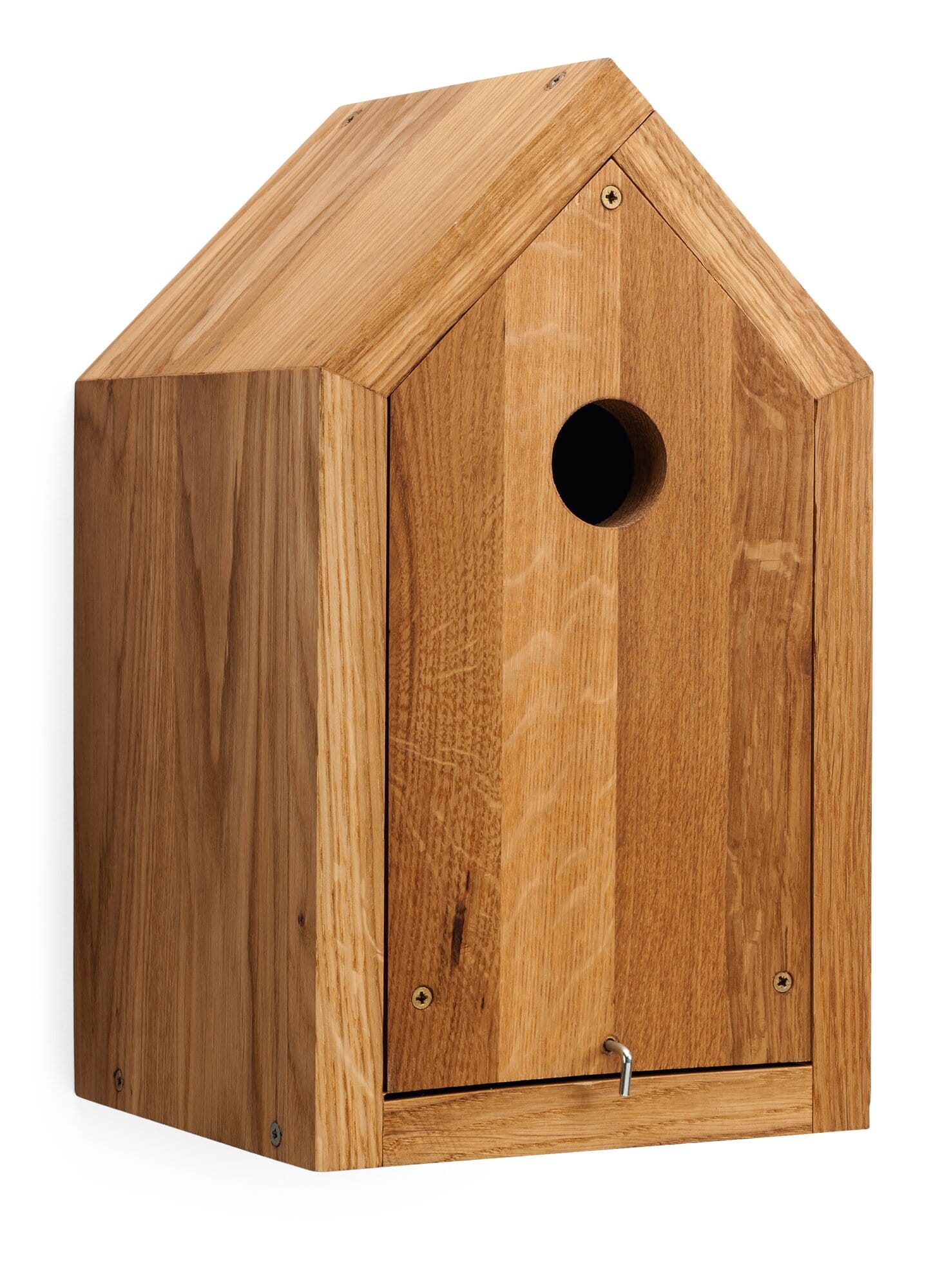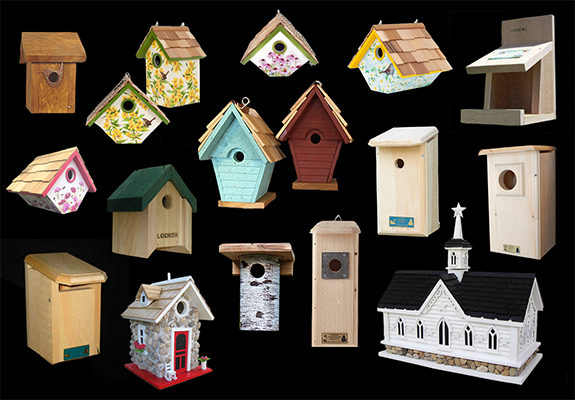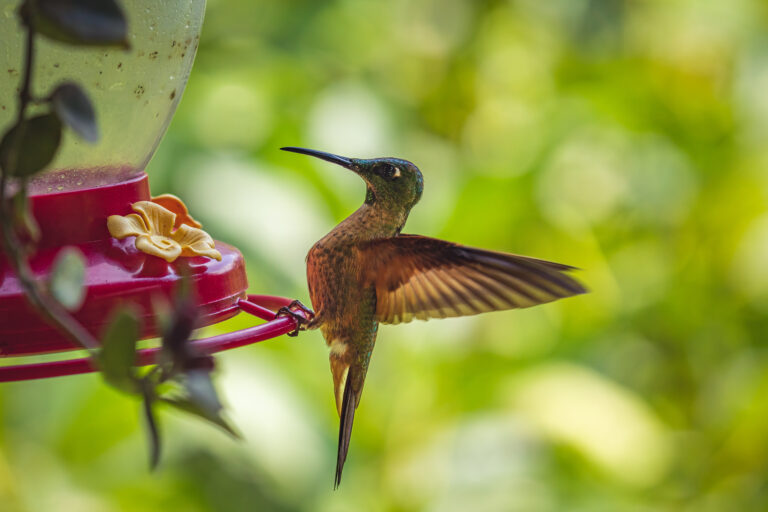Where Can I Get Bird Nesting Boxes? Best Finds & Tips
Bird nesting boxes provide safe homes for birds. They attract various species to your garden or yard.
Finding quality bird nesting boxes can enhance your outdoor space and help local wildlife. Whether you’re a beginner or a seasoned birdwatcher, knowing where to purchase these boxes is key. Many options exist, including local stores, online retailers, and even DIY projects.
Each choice offers unique benefits, from supporting local businesses to exploring custom designs. In this guide, we will explore the best places to find bird nesting boxes. You’ll learn about different materials, styles, and price ranges. This information will help you make an informed decision and create a welcoming environment for your feathered friends.

Credit: www.manufactum.com
Introduction To Bird Nesting Boxes
Bird nesting boxes are simple structures. They provide safe places for birds to build nests. These boxes can be made from wood, metal, or other materials. Many people use them in gardens or parks. They help attract various bird species. Plus, they offer protection from predators and harsh weather.
Setting up nesting boxes is easy. You can place them in trees or on poles. Birds often seek out these homes during the nesting season. With the right care, they can last for years. Creating a welcoming space for birds benefits everyone.
Benefits For Birds
Nesting boxes offer many advantages for birds. They create safe environments for raising young. Birds can lay eggs without fear of predators. These boxes also provide shelter from rain and wind.
Many species rely on these boxes for nesting. Birds like bluebirds and wrens thrive in them. Nesting boxes increase their chances of survival. Healthy birds lead to vibrant ecosystems.
Importance For Conservation
Bird nesting boxes play a key role in conservation. Many bird species face habitat loss. This loss can happen due to urban development and farming.
By using nesting boxes, people can help restore habitats. These boxes support local bird populations. They also educate communities about wildlife. Conservation efforts benefit both birds and the environment.

Credit: thebackyardnaturalist.com
Types Of Bird Nesting Boxes
Bird nesting boxes come in many types. Each type suits different birds. Selecting the right one is important for bird safety and comfort. Let’s explore the various types available.
Specific Species Designs
Different birds have unique nesting needs. Here are some common designs based on specific species:
- Bluebird Houses: Openings are about 1.5 inches wide. They are deep and provide good shelter.
- Wrens: Smaller boxes with a 1-inch entry hole work best. These boxes are often very compact.
- Woodpecker Boxes: These are deeper and have larger entry holes. They often feature a rough interior for grip.
- Chickadee Houses: These should be about 8 inches tall. A 1.25-inch hole is ideal for entry.
Different Materials Used
Nesting boxes can be made from various materials. Each material has its own benefits:
| Material | Benefits |
|---|---|
| Wood | Natural insulation and easy to build. |
| Metal | Durable and weather-resistant. |
| Plastic | Lightweight and easy to clean. |
| Composite | Combines benefits of wood and plastic. |
Choose the material that best fits your local climate. Wood is common, but metal and plastic offer different advantages.
Local Retailers And Garden Centers
Finding bird nesting boxes can be easy at local retailers and garden centers. These places offer a variety of options. You can often see the boxes up close. This helps you choose the right one for your yard.
Shopping locally supports your community. You get expert advice from staff. They can guide you to the best products for local birds.
What To Look For In-store
Check the material of the nesting box. Wood is a popular choice. It keeps birds safe from rain and wind. Ensure the box has proper ventilation. Good airflow helps maintain a healthy environment.
Look for sizes that match the bird species in your area. Some birds prefer larger spaces, while others need smaller ones. Check for easy access for cleaning. A removable roof or side panel is ideal.
Inspect the drainage holes. These keep the nest dry and comfortable. Also, consider the box’s design. It should blend well with your garden.
Supporting Local Businesses
Buying from local retailers helps your community. It keeps money within your area. Local stores often provide unique products not found online.
Supporting small businesses fosters relationships. You can learn about local wildlife and conservation efforts. This knowledge enriches your shopping experience.
Local retailers often hold workshops and events. These can teach you more about birds and gardening. You become part of a community that cares.
Online Marketplaces
Finding the right bird nesting boxes is easy with online marketplaces. They offer a wide variety of options. You can shop from home and compare prices easily. This section will guide you to the best places to buy bird nesting boxes online.
Top Websites For Birding Supplies
Here are some of the best websites to find bird nesting boxes:
- Amazon – Huge selection, fast shipping, and user-friendly.
- eBay – Great deals on new and used items.
- Wild Birds Unlimited – Specializes in bird supplies and offers expert advice.
- Chewy – Known for pet supplies, but has a good range of bird products.
- Home Depot – Offers various nesting boxes for DIY enthusiasts.
Customer Reviews And Ratings
Customer reviews are important for making smart choices. They help you see what others think about the product.
Here are some tips to find useful reviews:
- Check star ratings. Look for at least 4 stars.
- Read multiple reviews. Look for trends in comments.
- Watch for photos. They show real product quality.
- Focus on recent reviews. They reflect current product status.
Most websites allow you to filter reviews. Filter by the most helpful or recent feedback.
Using these tips will help you find the best bird nesting boxes.
Bird Conservation Organizations
Bird conservation organizations play a vital role in protecting our feathered friends. They focus on creating safe habitats and promoting awareness. Many of these groups offer bird nesting boxes to support local bird populations. These boxes help birds find safe spaces to raise their young.
By working with these organizations, you can contribute to bird conservation. You can also get quality nesting boxes for your backyard. Let’s explore two main ways to obtain these boxes through bird conservation organizations.
Adoption And Sponsorship Programs
Many bird conservation organizations offer adoption programs. You can adopt a bird or a nesting box. This helps fund conservation efforts and habitat restoration.
Sponsorship programs provide another option. You can sponsor a nesting box in your name. This small act supports local birds and raises awareness about their needs.
Organizations Selling Nesting Boxes
Some bird conservation groups sell nesting boxes directly. These organizations often create high-quality boxes. They ensure the boxes meet the needs of different bird species.
Buying from these groups helps fund their conservation projects. You also get a reliable nesting box for your backyard. Check local organizations for options near you.
Diy Nesting Boxes
Building your own bird nesting boxes is a fun project. It allows you to help local birds. You can create a safe space for them to raise their young. Plus, it’s a great way to learn about wildlife.
Gathering the right materials is essential. Using simple tools makes the process easier. Let’s dive into what you need and how to make your own nesting boxes.
Materials And Tools Needed
To make a bird nesting box, you need some basic materials. Here’s a list:
- Wood boards (cedar or pine are good choices)
- Screws or nails
- Wood glue
- Wood saw
- Drill with a drill bit
- Sandpaper
- Measuring tape
- Pencil
These materials are easy to find at local stores. Make sure to choose untreated wood. This helps protect birds from harmful chemicals.
Step-by-step Guide
Follow these steps to create your bird nesting box:
- Measure and cut the wood pieces. You need six pieces: front, back, two sides, top, and bottom.
- Drill an entrance hole in the front. The hole should be about 1.5 inches wide.
- Sand all edges and surfaces. This prevents splinters that can hurt birds.
- Assemble the box. Start with the back, sides, and bottom. Use screws or nails to hold them together.
- Add the front piece. Make sure it fits snugly against the sides and bottom.
- Attach the top. You can screw it on or make it removable for cleaning.
- Finish the box. Apply wood glue along the seams for extra strength.
- Paint or leave it natural. If you paint, use non-toxic options.
Place the nesting box in a safe location. Choose a quiet area that is sheltered from harsh weather. Enjoy watching the birds make it their home!
Tips For Choosing The Right Nesting Box
Choosing the right nesting box is essential for attracting birds. Many factors can affect your choice. Consider the type of birds in your area. Think about their needs and preferences. Here are some key tips to help you choose wisely.
Location And Placement
The location of your nesting box is very important. Place it in a quiet area. Birds prefer spots away from heavy traffic and noise. Here are some tips for placement:
- Mount the box at least 5 to 10 feet high.
- Face the entrance hole away from prevailing winds.
- Keep it out of direct sunlight for most of the day.
- Ensure easy access for birds and minimal disturbance.
Also, consider the surrounding environment. A natural habitat with trees and shrubs is best. This provides shelter and food for the birds.
Safety And Durability Concerns
Choose a nesting box made from safe materials. Wood is often the best choice. Avoid treated wood as it can be harmful. Here are some safety tips:
| Material | Pros | Cons |
|---|---|---|
| Untreated Wood | Durable, Natural | Needs maintenance |
| Plastic | Easy to clean, Long-lasting | Can get too hot |
| Metal | Very durable | Can rust or get too hot |
Check for sharp edges or small parts. These can harm the birds. Ensure the box has ventilation holes. This keeps the interior cool and dry.
By focusing on location, safety, and durability, you can create a welcoming environment for birds. A good nesting box will attract them and help them thrive.
Installation And Maintenance
Installing and maintaining bird nesting boxes is essential. Proper setup attracts birds. Regular maintenance keeps the boxes safe and clean. Follow these guidelines for the best results.
Best Practices For Installation
Choose the right location for your nesting box. Consider these points:
- Place it at least 5-10 feet off the ground.
- Avoid direct sunlight to prevent overheating.
- Keep it away from busy areas like roads or paths.
Use a sturdy mounting method. Options include:
- Mounting on a tree using screws.
- Hanging from a post or pole.
Ensure the entrance hole matches the bird species. Different birds need different sizes. Check the table below for common birds:
| Bird Species | Entrance Hole Size |
|---|---|
| Bluebirds | 1.5 inches |
| Chickadees | 1.25 inches |
| Wrens | 1 inch |
Maintaining And Cleaning Boxes
Regular cleaning keeps nesting boxes safe. Clean them at least once a year. Follow these steps:
- Wear gloves to protect your hands.
- Remove old nesting material carefully.
- Wash the inside with warm, soapy water.
- Rinse thoroughly and let it dry.
Inspect the box for damage. Look for:
- Cracks or holes that need repair.
- Loose screws or nails.
Make repairs before the nesting season starts. This ensures a safe environment for birds.
Ethical Considerations
Choosing bird nesting boxes involves more than just finding one. You must consider the impact on birds and the environment. Responsible actions help protect wildlife. Here are some key points to keep in mind.
Responsible Bird Watching
Bird watching can be a fun hobby. It is important to respect their space. Observe birds from a distance. Avoid disturbing their nests. Use binoculars to get a closer look. This keeps birds safe and calm.
Support local wildlife. Join bird watching groups or clubs. They promote ethical practices. Learning from experts helps you understand bird behavior. Share this knowledge with others.
Avoiding Invasive Species
Invasive species can harm native birds. They compete for food and nesting sites. Choose nesting boxes that suit local birds. Research which species are native to your area.
Purchase nesting boxes made from safe materials. Avoid those that may introduce harmful species. This helps protect local ecosystems. Your choices can make a difference.
Community Involvement
Community involvement plays a key role in providing bird nesting boxes. Local groups can make a big difference. They bring people together to support wildlife. With teamwork, everyone can help create safe spaces for birds.
Creating Local Bird Habitats
Building bird habitats helps protect local wildlife. Many communities organize events to build nesting boxes. These events often include families, schools, and nature clubs. Together, they learn about different bird species. They also understand what birds need to thrive.
Creating habitats encourages people to care for nature. Local parks and gardens can become home to many birds. People can enjoy watching them. It creates a bond between humans and nature.
Educational Opportunities
Community projects offer great educational chances. Schools can participate in building birdhouses. Students learn about bird behavior and their needs. They gain hands-on experience in conservation.
Workshops and talks can teach more about local birds. Experts can share knowledge on how to attract them. This helps foster a deeper appreciation for nature. Community members become more involved in protecting wildlife.

Credit: www.instructables.com
Frequently Asked Questions
Where Can I Find Bird Nesting Boxes?
You can find bird nesting boxes at local garden centers, pet stores, and home improvement retailers. Many online platforms also offer a variety of options. Websites like Amazon, Etsy, and specialized birding stores provide numerous designs and materials to suit different bird species.
What Materials Are Bird Nesting Boxes Made Of?
Bird nesting boxes are typically made from wood, metal, or recycled plastic. Cedar and pine are popular choices for wood boxes due to their durability. Metal boxes are often used for their longevity, while recycled plastic options can provide excellent insulation and weather resistance.
How Do I Choose The Right Nesting Box?
Choosing the right nesting box depends on the bird species you’re attracting. Research the preferred dimensions and entrance hole sizes for local birds. Additionally, consider the box’s location, ventilation, and drainage to ensure a safe environment for nesting.
Can I Build My Own Bird Nesting Box?
Yes, building your own bird nesting box is a rewarding project. There are many DIY plans available online tailored to different bird species. Use untreated wood and follow guidelines for dimensions, hole size, and placement to make your box effective and safe.
Conclusion
Finding bird nesting boxes is simple. Local stores and online shops offer many options. Consider your space and the birds you want to attract. Make sure to choose the right type and size. Building your own box is another fun choice.
Many resources can guide you through the process. By providing nesting boxes, you help local birds thrive. Enjoy watching them grow and flourish in your yard. Make your garden a welcoming home for nature. Start your journey today and support wildlife in your area.







